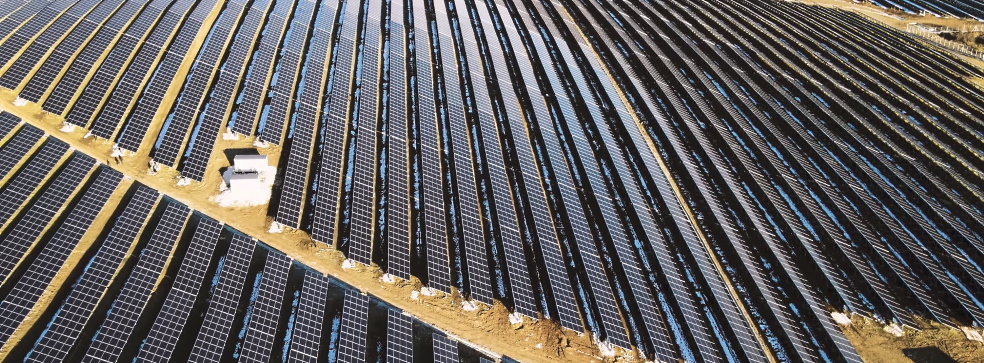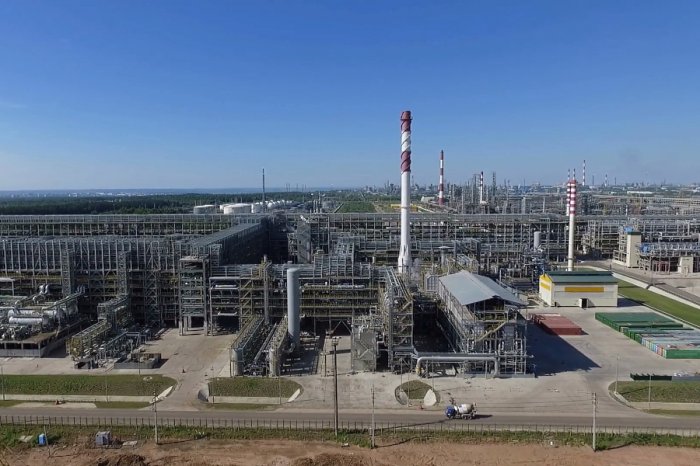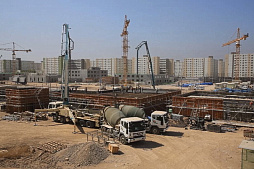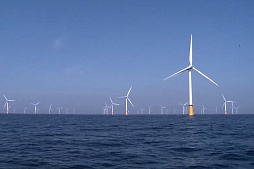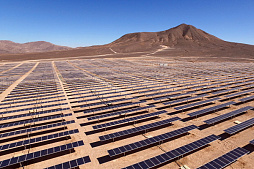To consider an application for financing, fill out the form and send it to us by e-mail along with the project brief, or contact our experts
Currently, many photovoltaic systems have been operating for 15-20 years or more, which raises the question of repowering or modernizing solar power plants.
The rapid development of technology in recent years opens up impressive opportunities for investors to improve project efficiency.
However, most companies prefer to save on innovative technical solutions, considering them too expensive in the face of increasing uncertainty in the energy markets. The consequences of refusal from the planned modernization of a solar power plant can often be accidents and failures, an increase in investment costs, as well as a decrease in energy production.
Our experience in planning photovoltaic investments and analysis of previously launched projects show that the technical and financial knowledge of investors and contractors is often insufficient.
Link Bridge Financial LTDA, a company with an international presence, is ready to offer you comprehensive professional solutions in the field of financing, construction and modernization of solar power plants.
The growing need for modernization of solar power plants
The first photovoltaic systems, mainly composed of primitive silicon panels, began to spread widely around the world in the 1980s.Over the past decades, the global market has seen a huge range of new technology solutions with higher installed capacity, higher efficiency and lower operating costs.
Replacing old photovoltaic systems with new ones, which is called modernization or repowering of solar power plants, provides investors with numerous advantages against the backdrop of the rapidly changing technological landscape of the solar energy sector. Since the lifespan of photovoltaic panels usually does not exceed 25-30 years, the efficiency of power generation inevitably decreases over time, and the risk of failure after this period increases exponentially due to aging equipment.
The growing need to modernize solar power plants is dictated by the change in technology, the emergence of more efficient solutions, as well as aging equipment with a decrease in its parameters and increasing costs for repair and maintenance.
The intensive development of photovoltaics in Europe and beyond has become possible thanks to effective government support systems for renewable energy sources (RES). There is a similar motivation for the modernization of solar power plants. An important incentive for investors in developed countries is the possibility of settling the current green tariff or obtaining a new one, but for a system with a larger installed capacity.
The scale of the modernization is evidenced by the growing amount of waste PV panels and other equipment accumulating around the world.
The problem became so serious that the authorities of the EU and most developed countries were forced to create special mechanisms for the disposal of photovoltaic waste.
In 2010, about 250 tons of old PV panels were decommissioned in Europe.
According to forecasts, by 2040, the total weight of dismantled photovoltaic cells in European countries will exceed 33 thousand tons.
In 2012, the EU WEEE (Waste Electrical and Electronic Equipment) Directive was amended. According to the document, companies in the photovoltaic sector in the European Union are obliged to collect and recycle used photovoltaic panels in accordance with strict rules for their transportation and disposal.
PV Cycle, founded in 2007 to recycle used photovoltaic panels free of charge, has collected tens of thousands of tons of photovoltaic waste across EU over the years. Despite the impressive numbers, this is just the tip of the global iceberg.
Aging solar power plants as an impulse for investment
Factors affecting the speed and nature of the aging process of photovoltaic panels can be divided into the following categories.Firstly, these are factors limiting the life of PV modules and related to the quality of materials and panel assembly.
Secondly, these are external influences that the equipment of a solar power plant is exposed to over a long period of operation.
Degradation of photovoltaic panels determines the decrease in the capacity of the cell during operation compared to the new cell. The National Renewable Energy Laboratory (NREL) conducts aging tests of PV modules and ground-based photovoltaic systems installed over the past decades, depending on the date of manufacture and types of equipment. Comparative studies have shown that new generation solar power plants are generally more reliable and durable than systems created in the early 2000s.
Table: Factors that determine the aging process of photovoltaic panels.
| Factors affecting the performance of PV panels | Aging effects |
| Operation in high temperature conditions | PV panel color change |
| Excessive solar radiation | Layering of protective layers of panels |
| Exposure to short wavelength UV rays | Malfunction of the bypass diodes |
| Photovoltaic panel shading | Damage to connecting elements |
| Influence of vegetation and anthropogenic objects | Corrosion of supporting structures |
| Rain, snow, wind and dust | Cracks and other damage to the surface of panels |
| Other negative factors | Decreased overall performance of modules |
The modernization of solar power plants in this context is becoming an increasingly affordable and profitable investment solution.
New technologies, developed based on years of operating experience and rethinking the shortcomings of old designs, offer customers more durable and cost-effective solutions.
If you need advice on PV finance, please contact LBFL representative and schedule an appointment at a convenient time. We will be happy to help make your project better.
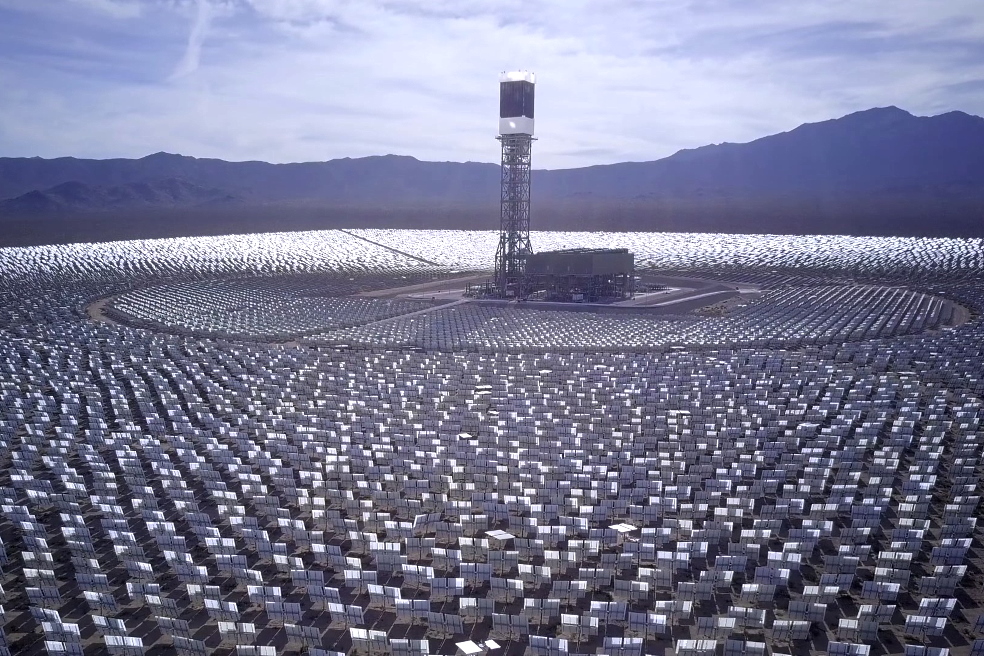
Some financial aspects of the modernization of photovoltaic systems
The economic analysis underlying the modernization of solar power plants should include a forecast of revenues from the sale of additional green electricity and tariff changes.In addition, when making an investment decision, it is important for the client's financial team to consider the following costs:
• Cost of diagnostics and examination of existing equipment.
• The cost of a new engineering project for the modernization of a photovoltaic system.
• Cost of dismantling and subsequent assessment of technical condition of the dismantled panels.
• Additional costs for transporting old panels to areas with higher solar radiation for continued operation.
• The cost of purchasing and installing new system components, including inverters.
• Expenses for training personnel to work with new equipment, etc.
You should also take into account the growth in the cost of electronic equipment, which has been outlined in the last year.
For most investors, the choice of modernization is becoming more and more attractive, especially given the possibility of further use and resale of old serviceable panels.
Reconnecting old components helps to extend the life of solar panels, which, when transported to places with better insolation, produce more energy. This significantly reduces the harmful effects of PV systems on the environment.
Selection of new PV panels and other equipment for modernization
The success of all investment projects in the field of renewable energy sources is based on the planning and engineering design phase.Solar power plant modernization is no exception.
The choice of equipment, rational planning of the solar park and fine-tuning of each component, taking into account the operating conditions and the client's requirements. This is not a complete list of tasks facing the engineering team.
What to consider when choosing new solar panels
Choosing a solar panel manufacturer is not an easy task for investors, as there are many companies on the market today offering their solutions with different technologies and configurations of PV modules.Panels of the first and second generation are no longer in high demand, being ineffective in comparison with advanced technologies with real efficiency exceeding 25-30%.
Old PV panels based on polycrystalline technology, widely used in previous years, had a real efficiency of only 14-16%. However, due to the low cost of production, these products occupied the lion's share of the market for a long time. Also, the serious advantages of the first generation panels include high reliability, providing up to 85% of the initial capacity even after 25 years of operation.
However, their disadvantage was their high sensitivity.
At temperatures above 25-30 ° C, older panels operated with more power loss than those of the second generation.
The second generation consists of thin-film panels with low efficiency, which to some extent is compensated by an attractive price that is several tens of percent lower.
The efficiency of the second generation photovoltaic panels reached 22%, while the new third generation models demonstrate an efficiency of 25% or more even after many years of operation. In addition, these products weigh half as much as older panels per unit area.
The panels installed during the modernization of the solar power plant are designed for a service life of at least 25-30 years, so customers need to pay special attention to the warranty.
The PV equipment manufacturer usually provides two types of warranties.
In the first case, the company guarantees a decrease in capacity within certain limits for a given period of time. Another type of guarantee concerns the quality of the PV panel assembly, usually for a period of 10 years. During this time, any defects such as cracks or leaks will become the basis for replacement or appropriate compensation.
It should be noted whether the warranty covers protection against Potential-Induced Degradation (PID) and micro-cracking causing hot spots.
During the entire warranty period, the customer must be able to receive quality service in the host country, which is important when choosing a brand.
When it comes to the long-term operation of a solar power plant after upgrading equipment, investors always face the risk of closing the manufacturing company. By choosing a reputable manufacturer outside of the photovoltaic industry, you can significantly reduce this risk.
Another aspect to look out for when upgrading a solar PV plant is the so-called power tolerance. In PV panels of low quality, this figure is usually from -3% to + 3%. The best manufacturers offer a positive power tolerance, so such panels will actually generate more power than the specifications indicate.
Power temperature coefficient is also an important parameter. It describes the decrease in the PV power of the panels as the ambient temperature rises.
The lower the value, the higher the performance of the product.
The determining factor in quality is the report of the panel test carried out under real conditions. Only a small number of companies publish these important parameters. Here the customer should pay attention to the NOCT (Nominal Operating Cell Temperature), which represents the normal operating temperature of the panel for the respective conditions. The lower the NOCT, the higher the efficiency of the module.
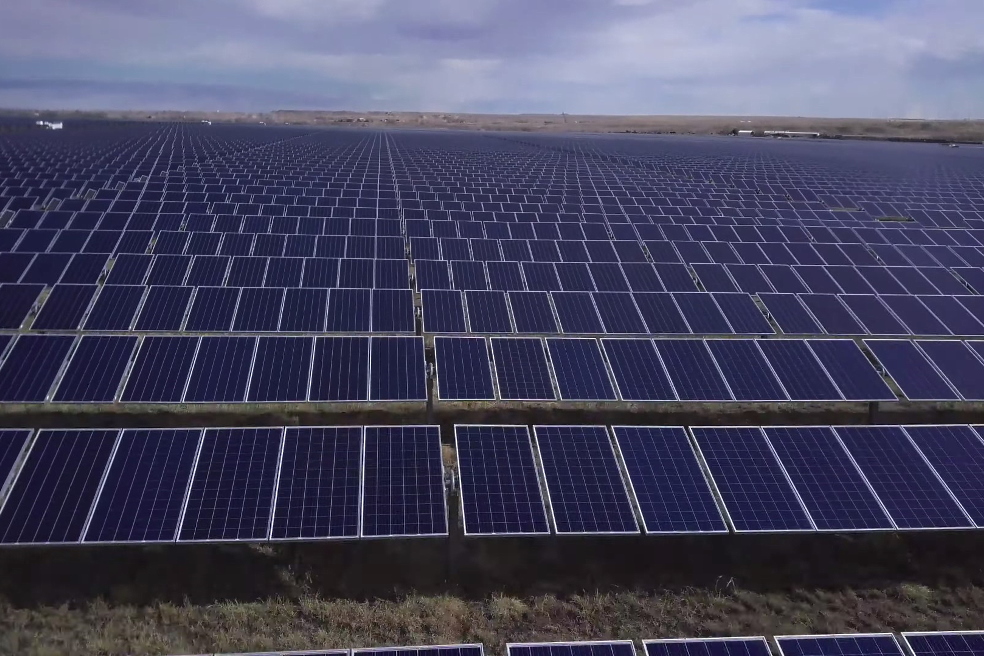
It is worth paying attention to the bypass diodes of PV modules.
Thanks to them, the shaded part of the module is cut off, while the solar power plant continues to receive power from the rest of the panels. In each case, the efficiency of PV panels, depending on the intensity of solar radiation, is determined by the graph of current-voltage characteristics.
It is also important to take into account the decrease in the capacity of the panels as a result of their slow degradation.
The rate of power reduction can be as high as 1% per year, but high quality products show more stable performance.
The aforementioned parameters are reflected in the difference in the power generation of the photovoltaic panels. Considering the above, investors may be faced with a situation where PV panels of the same nominal capacity in real conditions will provide performance that differs by 10% or even more.
For this reason, the modernization of photovoltaic panels requires a competent approach with a comprehensive study of all available technical solutions in a particular area, taking into account the climatic conditions of operation of the facility throughout the year.
Adaptation of photovoltaic equipment to operating conditions
The professional selection of the system components and the modeling of the expected energy production are carried out during the planning stage of the facility modernization.As part of this work, the engineering team conducts comprehensive studies of operational parameters using special software.
Modern photovoltaic inverters must be equipped with the most accurate control system optimized for the operating conditions. Operating facilities using the most advanced maximum power point (MPP) tracking algorithms and highly efficient converters ensures that the most energy is delivered from the PV modules to the grid.
An important role in improving the efficiency of solar power plants belongs to the introduction of software with monitoring functions, active power limitation and reactive power control.
For example, the active power should be automatically regulated depending on the mains frequency.
All of the aforementioned auxiliary functions of the solar power plant can be easily parameterized, which allows the engineering team to adapt the facility to local operating conditions.
For the correct selection of inverters, it is necessary to check the compatibility of the inverters with the specific PV panels. Inverter testing refers to the value of DC voltage, DC current and PV power. When upgrading inverters, it is important to calculate the minimum and maximum voltage levels of the PV panels and ensure that the former is higher than the minimum input voltage of the inverter and the latter is lower than the maximum input voltage of the inverter.
The calculation of the energy generated by the PV system requires taking into account the nominal power of the panels, the angle of inclination and azimuth, resistance losses, losses due to temperature differences, the efficiency of the inverter and other parameters.
In addition to the above described selection of devices, the expansion and modernization of the PV plant requires customers to pay attention to the following technical aspects:
• Simulation of the shading of the investment area throughout the year for the optimal arrangement of the rows of PV modules. Achieving a compromise between building density and avoiding the shading.
• The correct choice of new supporting structures for the photovoltaic panels, high enough to be free to mow the grass on the construction site.
• The use of special structures that provide free drainage of water, so that they will be less susceptible to corrosion and algae growth.
• Studies to select the most appropriate tilt angle and position of the modules to minimize energy loss due to accumulation of snow, dust and leaves.
• Equipping the solar power plant with computers, sensors and software for remote monitoring of operating parameters from a remote data transmission, which will quickly respond to a decrease in energy production.
• Development of optimal protective equipment for the photovoltaic system.
If you need professional advice on the selection of PV panels and other aspects of solar power plant modernization, please contact us at any time.
We support energy projects around the world and will be happy to provide you with professional advice.

Our offers for the modernization of solar power plants
Link Bridge Financial LTDA with its international partners are supporting the growing trend of the modernization of photovoltaic plants around the world.Technical solutions are especially important for power plants nearing the end of their expected useful life or for projects that do not achieve planned performance due to reduced efficiency or component failure.
Our team considers solutions for the modernization of each facility on an individual basis, taking into account the following technical, financial and operational factors:
• Compliance with the actual performance of the facility expected. If the actual performance becomes lower due to frequent failure of inverters or other critical components, their replacement is considered recommended.
• Insufficient performance of photovoltaic inverters. The actual performance of older inverters is significantly lower than modern counterparts.
• Limited availability of parts and maintenance for obsolete equipment, resulting in increased costs and reduced operational stability.
• Closure of companies producing old equipment, which is accompanied by the termination of previously signed contracts, as well as the termination of warranty service for the solar power plant.
Over the years, our and international partners have been offering new solutions to automate and improve the performance of photovoltaic panels, inverters and other solar power plant components.
LBFL is also ready to develop the optimal financial model for your project and provide long-term financing for the modernization of the facility.
Our advantages include the following:
• Technologies to adapt new solutions to your facility to avoid potential customer connectivity issues.
• Improved protection of solar power plant equipment in extreme conditions.
• Possibility of connecting modern electric energy storage units to existing equipment to increase the efficiency of the facility.
• Advanced technical solutions for monitoring solar power plants.
• Full compliance with applicable international and national standards of the host country, which is ensured by clear coordination of efforts with the customer.
• Proven quality equipment and long service life.
• Professional technical support.
Through cooperation with Link Bridge Financial LTDA, customers will receive a full package of technical, financial and legal services to ensure the success of the solar power plant modernization.
The projects have demonstrated unprecedented reliability and quality of projects built in extreme conditions, from the deserts of Saudi Arabia to the harsh climate of Northern Europe.
Are you interested in financing solar energy projects?
Are you planning construction, expansion or modernization of a solar power plant?
Contact our representatives to learn more about our business services.



